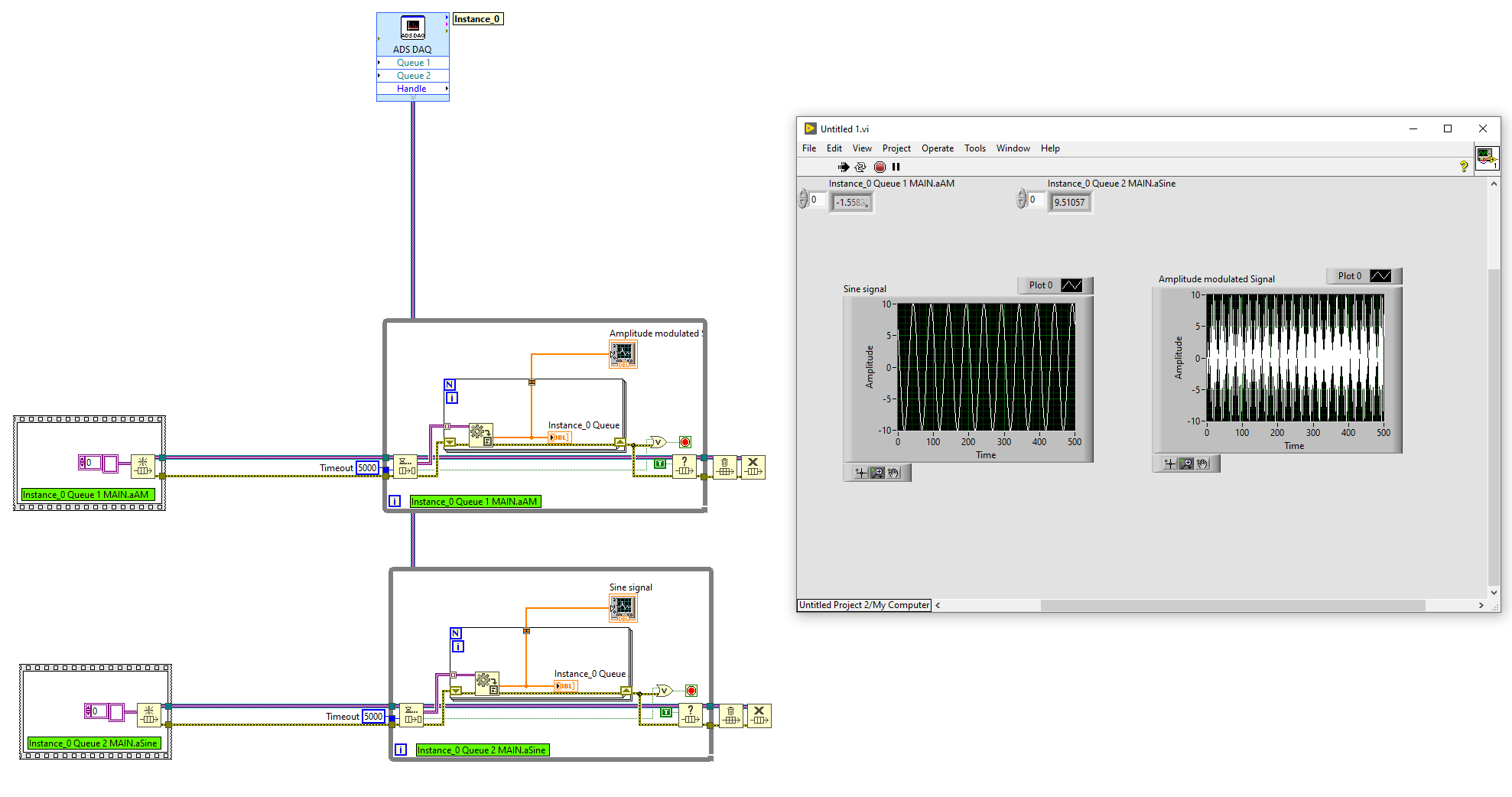Quick start
The following describes how to set up the connection between LabVIEWTM and TwinCAT using an exemplary measuring task. Thereby data is generated in TwinCAT, which is read by LabVIEWTM.
Activating a TwinCAT project
- Download this sample project. There is a tnzip file in the ZIP archive.
- 1. Open TwinCAT XAE and select
File > Open > Open Solution From Archive... to load the tnzip. - 2. If you do not already have a valid TF3710 license on the target system, go to System > License > Manage Licenses and select the checkbox for the TF3710 license.
- 3. Activate the project, e.g. on your local PC or on a remote target system and start the PLC.
- The TwinCAT project is now running on your target system.
Creating LabVIEW™ project
- LabVIEW™ is open.
- 1. Create a new project and open an empty VI.
- 2. Save the VI.
- 3. Place an instance of the ADS DAQ VI on the block diagram. To do this, navigate in the Functions palette to
User Libraries > Beckhoff LabVIEW Interface > ADS DAQ. - A user interface for configuring the connection to TwinCAT opens automatically.
- 4. Select Symbol Interface to create a new configuration.
- 5. Browse with the Target Browser in the middle field into your target on which you have activated the TwinCAT project.
- 6. Then select the ADS symbols to be read. Navigate to 851: Port851 > MAIN and select the ADS symbols aAM and aSine. Drag and drop both icons to the right area (ADS Read area).
- 7. Click OK.
- The Symbol Interface Configurator closes and you are shown further setting options. Don't change the default settings and select Finish.
- The user interface is closed and code is automatically generated on the block diagram according to the configuration. You can change and extend this individually.
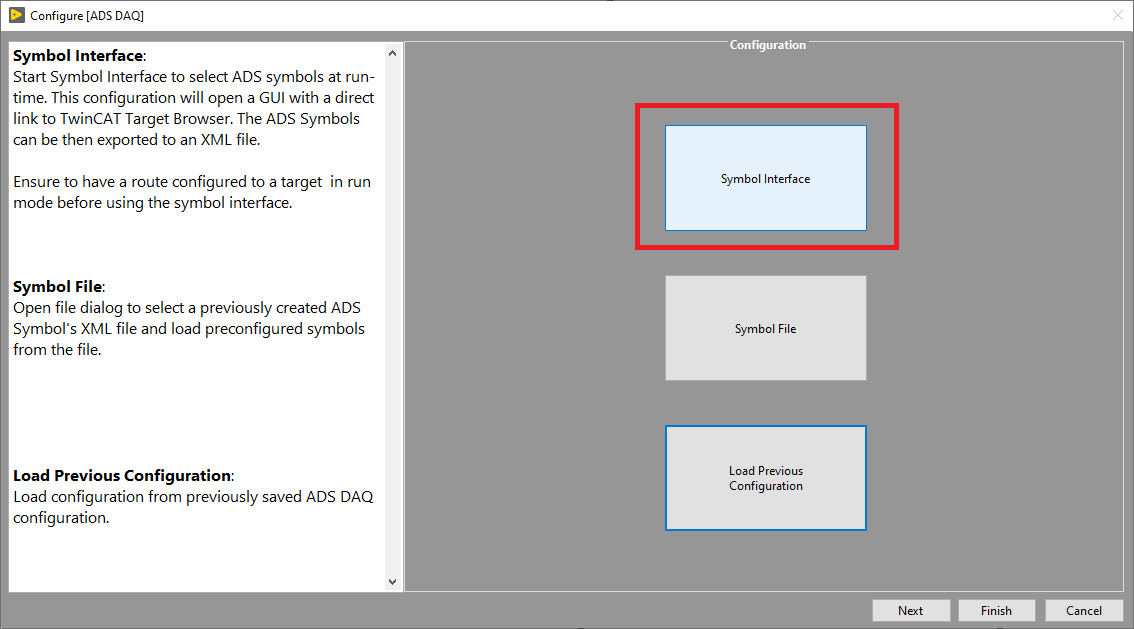
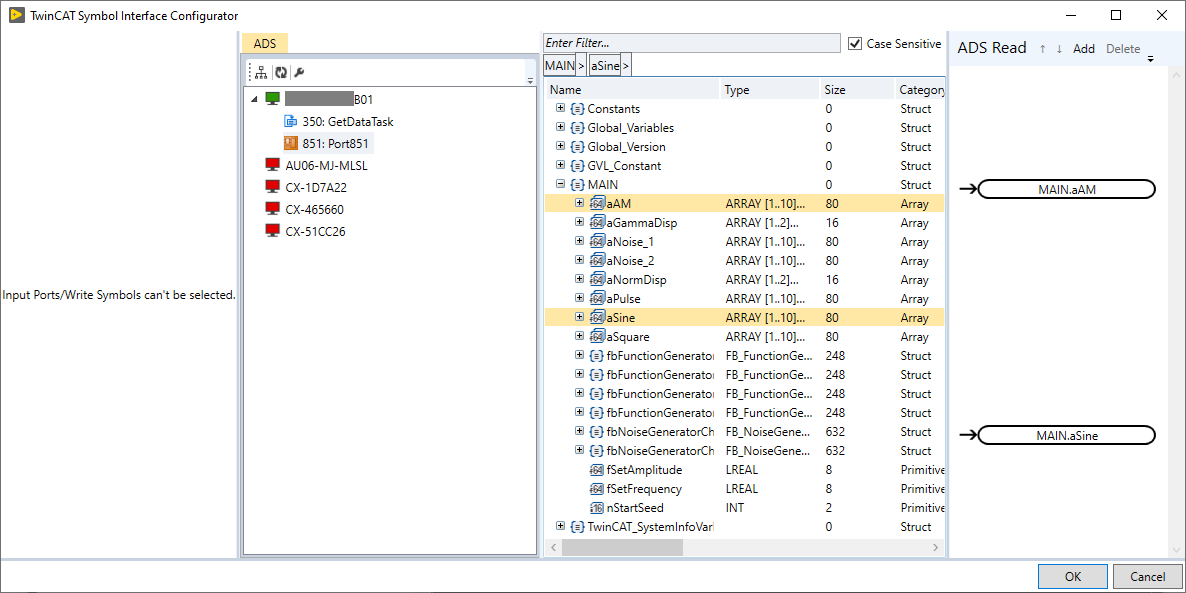
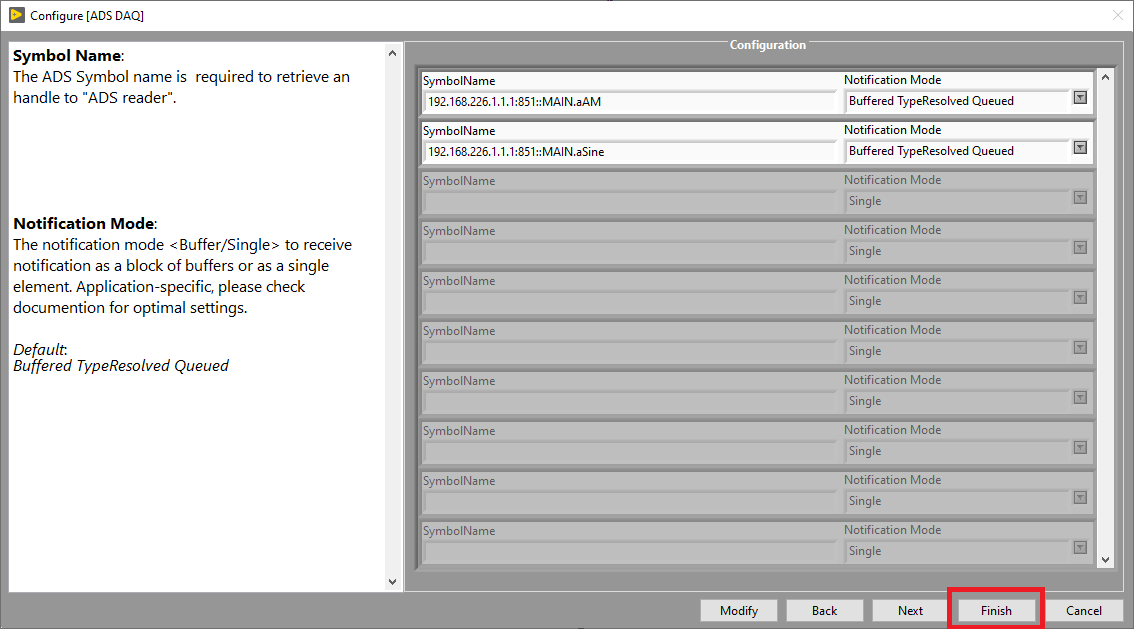
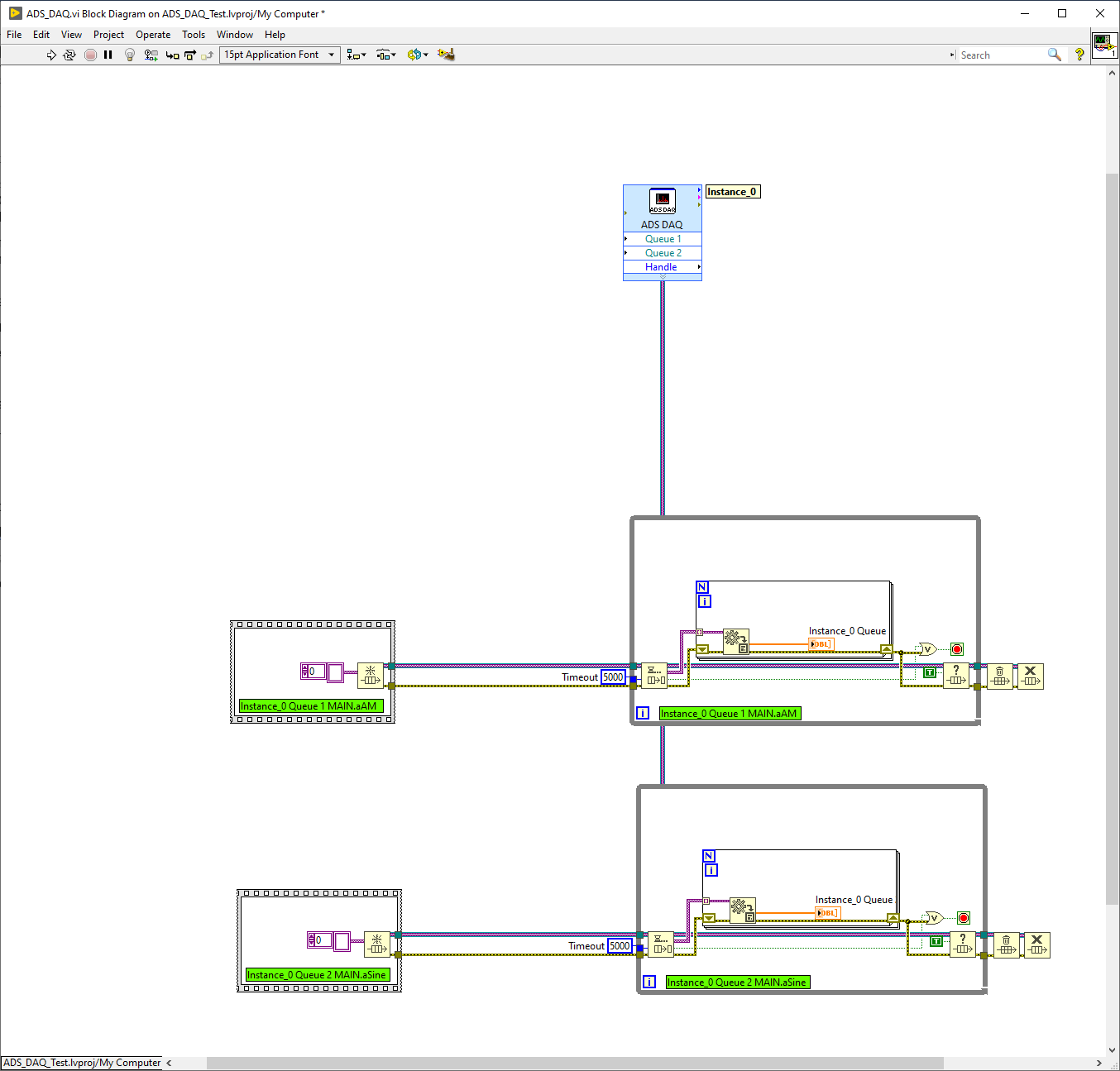
Extending block diagram
- Code was generated on the block diagram (see above).
- 8. Extend the block diagram, e.g. with a waveform graph.
- 9. Set your VI to Run mode.
- In this case, look at the two time signals on the front panel.
